
Charles Wyndham, 2nd Earl of Egremont, PC, of Orchard Wyndham in Somerset, Petworth House in Sussex, and of Egremont House in Mayfair, London, was a British statesman who served as Secretary of State for the Southern Department from 1761 to 1763.
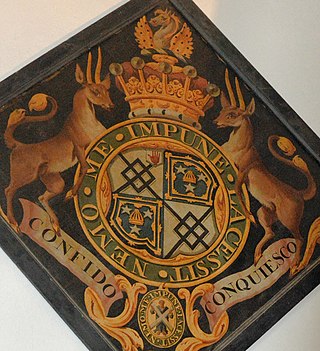
Earl of Dysart is a title in the Peerage of Scotland. It was created by King Charles I in 1643 for William Murray and has been held continuously since then by his relatives.

John Perceval, 2nd Earl of Egmont was a British politician, political pamphleteer, and genealogist who served as First Lord of the Admiralty. Of Anglo-Irish background, he sat in both the Irish and British Parliaments. He was the father of the Regency Era Prime Minister Spencer Perceval.

Daniel Finch, 8th Earl of Winchilsea and 3rd Earl of Nottingham, , of Burley House near Oakham in Rutland and of Eastwell Park near Ashford in Kent, was a British peer and politician.
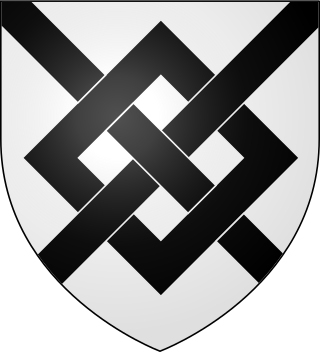
The Tollemache family is an English noble family, originally from Suffolk. The family's surname is pronounced TOL-mash.

There have been two baronetcies created for people with the surname Tollemache, or Talmash, one in the Baronetage of England and one in the Baronetage of Great Britain.

Stephen Fox-Strangways, 1st Earl of Ilchester PC was a British peer and Member of Parliament.

Thomas Osborne, 4th Duke of Leeds, KG, PC, DL, FRS, styled Earl of Danby from birth until 1729 and subsequently Marquess of Carmarthen until 1731, was a British peer, politician and judge.
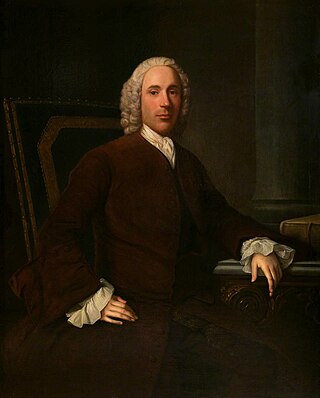
Hon. William Finch of Charlewood, Hertfordshire, was a British diplomat and Whig politician who sat in the House of Commons from 1727 to 1761. He was considered an indolent diplomat and became an opponent of Walpole, but maintained his post in the Royal Household for over 20 years until he began to lose his senses.

Sir Edward Walpole KB PC (Ire) was a British politician, and a younger son of Sir Robert Walpole, Prime Minister from 1721 to 1742.

Lionel Tollemache, 5th Earl of Dysart, styled Lord Huntingtower until 1770, was an English peer.

Wilbraham Tollemache, 6th Earl of Dysart, FRS was a British military officer, politician and peer who sat in the House of Commons from 1771 to 1784.

Edward Finch-Hatton of Kirby Hall, near Rockingham, Northamptonshire, was a British diplomat and politician who sat in the House of Commons for 41 years from 1727 to 1768. The youngest son of the 7th Earl of Winchilsea
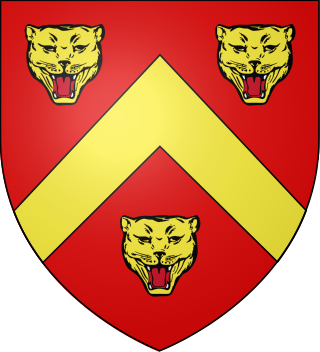
Thomas Parker, 3rd Earl of Macclesfield FRS, styled Viscount Parker between 1732 and 1764, was a British peer and politician.
William FitzWilliam, 3rd Earl FitzWilliam was a British peer, nobleman, and politician.

Lady Charlotte Finch was a British royal governess. She was governess to the children of King George III and Queen Charlotte for over thirty years, holding the position from 1762 to 1793. Her parents were courtiers Thomas Fermor, 1st Earl of Pomfret, and Henrietta Louisa Jeffreys. The couple were educated and frequently travelled with their growing brood of children to the continent. Charlotte, like her sisters, was well educated; in 1746, she married the Hon. William Finch and had issue including George Finch, 9th Earl of Winchilsea.
John Monson, 2nd Baron Monson, was a British officeholder.
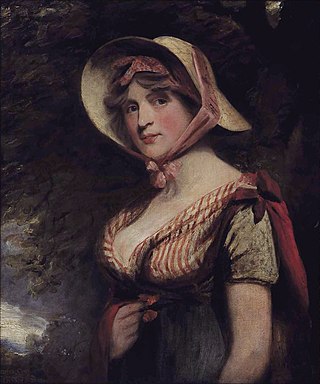
Louisa Manners Tollemache, 7th Countess of Dysart was an English peeress. Her father held considerable estates in England largely due to the two marriages of Elizabeth Maitland, Duchess of Lauderdale, earlier Tollemache, née Elizabeth Murray. Her elder brothers left no surviving issue on their deaths which enabled her to enjoy and help to pass on to her descendants the key family settlement properties: Helmingham Hall and Ham House in England.

Felton Hervey was an aristocratic English politician from Bury St Edmunds in Suffolk, and a member of the British royal household. He took his son and daughter on a grand tour of Italy where he met Johann Zoffany and Pope Clement XIV.
Dorothy Clement as daughter of a Darlington postmaster, she was the mistress of Edward Walpole and mother of his four children, including Maria Walpole, who became Duchess of Gloucester and Edinburgh upon her marriage to Prince William Henry, Duke of Gloucester and Edinburgh.


















